What do Chiquita bananas and Hurricane Relief have in common? 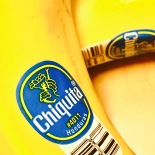 Well a lot actually but its a story that isn’t often told. If you didn’t know it bananas, are grown at farms in tropical regions of the world. The banana industry in the United States gets its bananas from tropical regions like Costa Rica, Guatemala, Honduras, and Panama. This supply chain started back in 1899 when American railroad companies operating in South and Central America merged with the Boston Fruit Company to create the United Fruit Company. In the 1920s, the
Well a lot actually but its a story that isn’t often told. If you didn’t know it bananas, are grown at farms in tropical regions of the world. The banana industry in the United States gets its bananas from tropical regions like Costa Rica, Guatemala, Honduras, and Panama. This supply chain started back in 1899 when American railroad companies operating in South and Central America merged with the Boston Fruit Company to create the United Fruit Company. In the 1920s, the 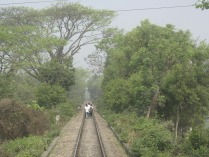 United Fruit Company established a powerful organization in Honduras exporting to and gaining the dominant market position in the United States. The company cleared and planted lands for bananas developing extensive road, railroad and port facilities. The company also built housing and schools for the children of employees, hospitals, and research laboratories. It could be said that many of these roads and the only deep water ocean port in Central America form the basic transportation network in Honduras today.
United Fruit Company established a powerful organization in Honduras exporting to and gaining the dominant market position in the United States. The company cleared and planted lands for bananas developing extensive road, railroad and port facilities. The company also built housing and schools for the children of employees, hospitals, and research laboratories. It could be said that many of these roads and the only deep water ocean port in Central America form the basic transportation network in Honduras today.
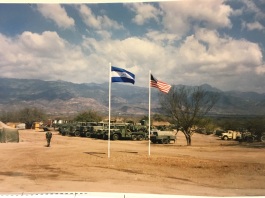
Photo Jonathan Long
In our post 9/11 world many have never heard of the US Military operations called “New Horizons.” This is an engineering and medical exercise to benefit the people of Central America and the Caribbean. During these missions, military engineering teams deploy from the United States to build

Photo National Weather
On now to hurricanes. Bananas aren’t the only things that grow in the tropic areas – hurricanes do too. One hurricane in particular, Hurricane Mitch, was the most powerful and destructive hurricane of the 1998 Atlantic hurricane season, with maximum sustained winds of 180 mph. The Category 5 Hurricane (SSHS) killed more than 11,000 people and some estimates put the figure as high as 18,000, making Mitch the deadliest storm in the Western Hemisphere since the Great Hurricane of 1790 (1). Hurricane Mitch delivered 180 mph winds while hovering over Honduras for more than a week and sustained winds of 285 km/h (178 mph) for 15 hours.

Photo Jonathan Long
While we in Panama watched with dread, there was little anyone could do while the storm raged. We had been planning for follow on construction operations in Honduras after the 1997 exercise but now all schedules were dramatically accelerated. Our mission changed from national assistance for Honduras to humanitarian assistance. From my point of view, this change in mission occurred naturally and was very smooth. Maybe this change seemed so smooth because we had just completed the gigantic “relief in place” after a yearlong operation in Bosnia. In 1996 we moved from a European based Implementation Force (IFOR) of 60,000 (which I was part of), to a Stabilization Force (SFOR) of about 30,000 (2). This was a classic “relief in place” conducted on a huge scale but others may have a different view. Little did we know at that time that conducting RIP/TOA (relief in place / transfer of authority) would become so common place during the wars in Iraq and Afghanistan.
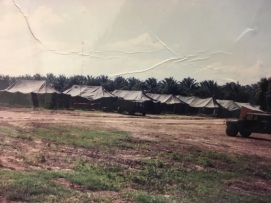
Photo Jonathan Long
Immediately after the hurricane, the U.S. responded with over $300 million in humanitarian assistance, providing food, medicine, emergency shelter, and agricultural assistance through the US Agency for International Development (USAID), the U.S. military, the U.S. Department of Agriculture (USDA) and civilian relief workers – again another example of joint operations similar to what we had just conducted in Bosnia and a foreshadow of Iraq and Afghanistan operations. My job was to provide the on the ground, contracting assistance for all construction logistical support in Honduras. Following Hurricane Mitch 5,300 military personnel were deployed to Central America, representing all four armed services and reserve components – again Joint Operations.
So what did we do, what does this have to do with bananas and why is the US Military so
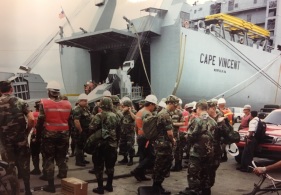
Photo Jonathan Long
successful at responding to calls for international help? I think our success results from our adage “train like you fight” meaning we don’t have one standard for training and expect some other outcome when its “go time.” First things first, we had to get the personnel and their equipment from the United States into Honduras – no easy task since the ports had sustained damage and one port was closed unable to receive the roll-on/roll-off ships. These LMSRs are huge capable of cargo-carrying capacity of more than 300,000 square feet. The Port of Cortes was our only reception point.
The operation was little different than similar missions I had conducted while rail loading M1 Tanks in Korea for Team Spirit or moving a Signal Battalion of soldiers and equipment from one end of Germany to another. However, unlike Korea and Germany, there were no established logistics elements at the embarkation point, along the route or at the destination. All that support would need contracting. We contracted for food, contracted for living quarters, contracted for line haul transportation for heavy equipment, contracted for cleaning services, and contracted for building materials. The key was synchronizing all these contracts so they were delivered or performed at the right place and at the right time. No less was acceptable – but it was difficult to do while located in Panama.
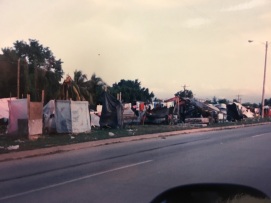
Photo Jonathan Long
Within days after the flood waters had receded from the airport in San Pedro Sula and the airlines partially resumed flights, I caught a flight to Belize (which was accepting commercial aircraft) and then a twin-engine prop plane into Honduras. Luckily I had provided very similar logistical contract support the previous year in Honduras, I knew the general layout of the area and many of the contractors located in the vicinity. When I arrived at the airport I could see the discolored and muddied height of the flood waters reaching a height of about 9 feet but it was the mud that caused the runway closure. The destruction caused by the storm was immediately evident and devastating to roads, bridges, and homes.
What made the most dramatic impression on me were the blue tarps strung in the mediums of the roads providing temporary shelter to families whose homes were lost to the storm. It was dramatic but a completely different disaster
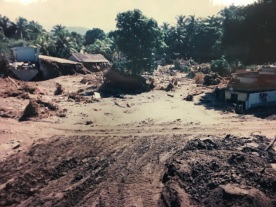
Photo Jonathan Long
environment than that I had just experienced in Bosnia where homes; while still standing, were pock marketed with bullet holes, partially burned and in many cases walls pierced open by tank rounds. In both cases the people were living in elemental conditions without electricity, running water, heating or cooling or toilets. In both cases, the people were now refugees in their own country. Whether from either ethic warfare or natural disaster both were equally cruel, especially on the kids.
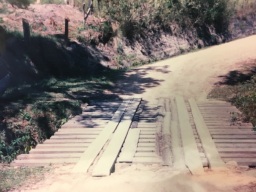
Photo Jonathan Long
Back to bananas. Here is where the infrastructure work developed by the United Fruit Company in the 1920’s came into play – most if not all the routes we used to move personnel and equipment around Honduras were built on the road networks developed to support the banana export business. That was my first order of business before I could develop the contracting support needed, I had to locate the planned base camps and construction sites so I would know where contracted services and supplies would be delivered.
In some cases, because of the preplanned development projects, these camps were in remote locations and in some cases, they were
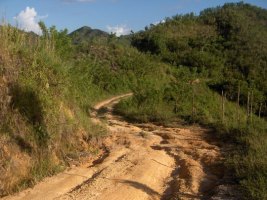
Photo Jonathan Long
not. Regardless of location, I travelled to each work site to make sure required sand, gravel, cement and concrete could be delivered by commercial transport. That is not to say these roads were in great shape to start with but believe me when I say they were worse after the hurricane. In some cases, we did contract for private airfields to enable the delivery of supplies and personnel by US Aviation, specifically in the direction from San Pedro Sula to Yoro.
Once the materials were on site and the contracted services began performance, the US Military took over and started to work. We worked with and trained Contracting Officer Representatives (COR) to manager the performance and ensure that we received the 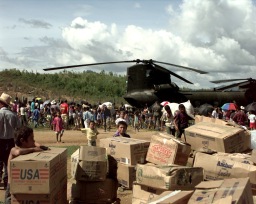 quality of materials and supplies that we required. During this time, military personnel are credited with rescuing more than 1,000 people trapped by flood waters providing medical care and immunizations to over 35,000 people. Our construction battalions cleared major roads (some as old as the 1920’s) and bypasses, as well as erecting prefabricated bridges (Bailey Bridges). Our military personnel rebuilt medical clinics and schools, and provided communities with safe drinking water by building wells. Military aircraft, including 53 helicopters were deployed throughout the region to assist distribution delivering more than 3.2 million pounds of food and more than 500,000 gallons of water. It is reported that the military transported to the region almost 8 million pounds of food, clothing, medicine and relief items donated by American citizens (3).
quality of materials and supplies that we required. During this time, military personnel are credited with rescuing more than 1,000 people trapped by flood waters providing medical care and immunizations to over 35,000 people. Our construction battalions cleared major roads (some as old as the 1920’s) and bypasses, as well as erecting prefabricated bridges (Bailey Bridges). Our military personnel rebuilt medical clinics and schools, and provided communities with safe drinking water by building wells. Military aircraft, including 53 helicopters were deployed throughout the region to assist distribution delivering more than 3.2 million pounds of food and more than 500,000 gallons of water. It is reported that the military transported to the region almost 8 million pounds of food, clothing, medicine and relief items donated by American citizens (3).
President Clinton called the U.S. Southern Command NEW HORIZONS response to Hurricane Mitch “the largest humanitarian assistance mission since the Berlin Airlift.” Honestly at the end of each long day it wasn’t about a Presidential proclamation, or about the danger and excitement of running historic roads or even about traveling through miles and miles of epic date palm and banana plantations; it was about choosing to be in a position where we know we helping individuals make their world and ours a better place. So whether we used roads built for the banana business or not, whether operating in the Korea or Bosnian winter, or the heat of Iraq or Afghanistan – and even in hurricane drenched Honduras, that’s what’s in common – working to make the world a better place.
(1) http://www.history.com/topics/hurricane-mitch
(2) https://www.defensie.nl/binaries/defence/documents/reports/2009/05/
 Memory association can be a funny thing. Take for example an empty cigarette box laying on the sidewalk during a morning run. For most “normal” people all they see is an empty paper box that should be thrown in the trash can, but for some of us who went through deployment training as part of the Implementation Force (IFOR) NATO-peace enforcement force (Bosnia and Herzegovina Operation Joint Endeavour), what I see is a potential booby trap. Before heading into Bosnia to join some 54,000 troops from 32 countries we trained for week at the Europe-based Combat Training Center (CTC) Hohenfels Training Area, Germany. Field training in freezing January in Germany is a “thrill” to say the least. The block of instruction I remember best involved hand made booby traps now thanks to Iraq and Afghanistan are officially renamed “Improvised Explosive Devices” (IEDs).
Memory association can be a funny thing. Take for example an empty cigarette box laying on the sidewalk during a morning run. For most “normal” people all they see is an empty paper box that should be thrown in the trash can, but for some of us who went through deployment training as part of the Implementation Force (IFOR) NATO-peace enforcement force (Bosnia and Herzegovina Operation Joint Endeavour), what I see is a potential booby trap. Before heading into Bosnia to join some 54,000 troops from 32 countries we trained for week at the Europe-based Combat Training Center (CTC) Hohenfels Training Area, Germany. Field training in freezing January in Germany is a “thrill” to say the least. The block of instruction I remember best involved hand made booby traps now thanks to Iraq and Afghanistan are officially renamed “Improvised Explosive Devices” (IEDs).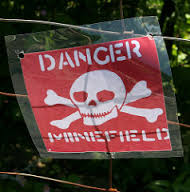 – out of wooden boxes.” Did you know that former Yugoslavia was one of the few countries that proudly promoted manufactured booby-trapped items like flashlights, fountain pens and door handles? Me neither – talk about mission suck! So we had to train to recognize potential booby traps and mines. I really wasn’t worried about myself setting off a booby trap, but I did worry constantly that one my 60 soldiers in my Company Command or those driving our soft side HMMWV’s all around Bosnia would set off a mine. I knew we were planning on establishing communication systems in lots of building, mountain tops and other places that were likely mined or booby trapped.
– out of wooden boxes.” Did you know that former Yugoslavia was one of the few countries that proudly promoted manufactured booby-trapped items like flashlights, fountain pens and door handles? Me neither – talk about mission suck! So we had to train to recognize potential booby traps and mines. I really wasn’t worried about myself setting off a booby trap, but I did worry constantly that one my 60 soldiers in my Company Command or those driving our soft side HMMWV’s all around Bosnia would set off a mine. I knew we were planning on establishing communication systems in lots of building, mountain tops and other places that were likely mined or booby trapped.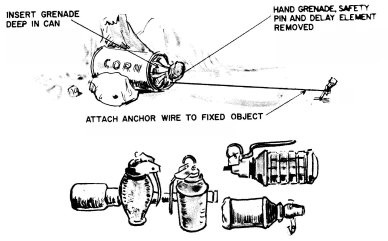
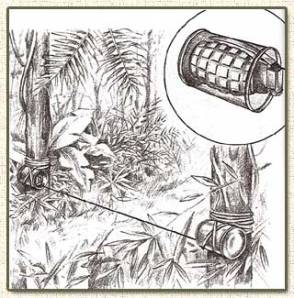
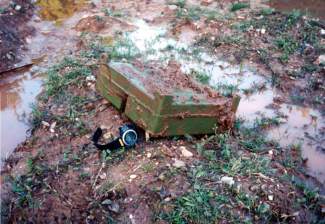 was more than doubled to seven million mines in Bosnia. Looking back at the data in the former Yugoslavia after a year in country 1996, antipersonnel landmines killed 42 Peacekeepers and injured Note to self on the situation above – leave the watch alone. alone.315. https://www.icrc.org/eng/resources/documents/misc/57jn74.htm
was more than doubled to seven million mines in Bosnia. Looking back at the data in the former Yugoslavia after a year in country 1996, antipersonnel landmines killed 42 Peacekeepers and injured Note to self on the situation above – leave the watch alone. alone.315. https://www.icrc.org/eng/resources/documents/misc/57jn74.htm